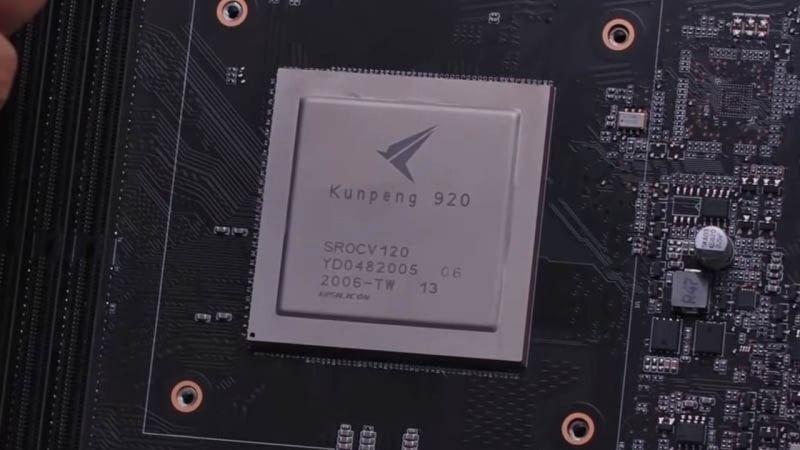Huawei launched the Kunpeng 920 processor a year ago, which supports three core-numbers, 32/48/64 at frequencies up to 2.6 GHz, is based on a 7-nm process, is compatible with the ARM architecture, and is Huawei’s high-performance processor for the data center. Huawei has already used the Kunpeng 920 for desktops and recently introduced a high-performance mainframe.
Huawei is trying to position itself after being so severely affected by the US government’s technology bans, it is expected that the production of Kirin CPUs in its family will be discontinued by September 15.
It also appears that given the current situation, no option exists for the company which would allow it to deliver its Kunpeng 920 CPUs.
This specific system will use Huawei’s Kunpeng 920 3211K, which offers 24 cores at 7nm with a maximum clock frequency of 2.6 GHz based on ARM’s Neoverse N1 microarchitecture. It also comes with a Samsung 512 GB SSD and an AMD Radeon RX 520 GPU.
This particular configuration is reported to outperform the 8-core Intel Core i9-9900K processor in terms of multi-core performance, while single-core performance is not specified as it is likely to lag behind the high speeds of the Core i9-9900K.
Therefore, the fact that the KunPeng 920 in this particular configuration can keep up with Intel’s processor in multi-threading performance by having 1.5 times more threads and 3 times more cores is hardly surprising.
Pictures of this new desktop were available before, the outer design of the new host of Huawei is relatively simple and belongs to the tower case, the front of the case has 3 USB-A and one USB-C interface and a headset interface, but can also be equipped with an optical drive, the back has 4 USB-A interfaces, network cable interface, etc.
Huawei is expected to promote these computers for use in government and enterprise environments, which means that they will ship with China’s Unified Operating System (UOS). Specific details such as price and exact start date have not been disclosed.
